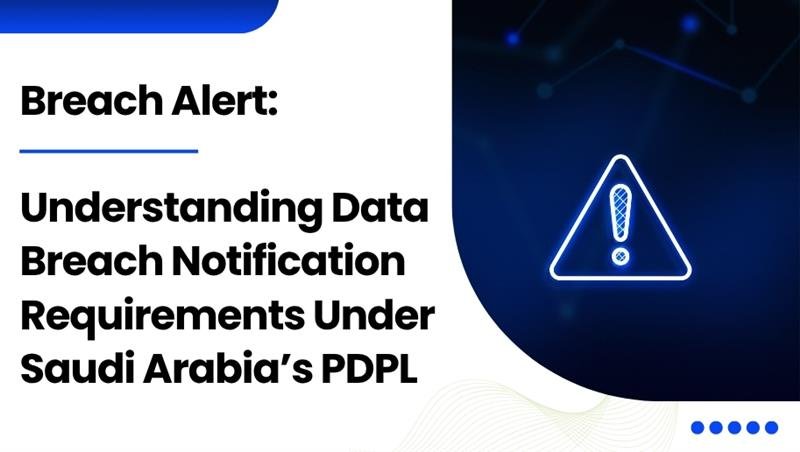
- Introduction
The Personal Data Protection Law (PDPL) is Saudi Arabia’s first complete legal framework for data protection. It is enforced by the Saudi Data and Artificial Intelligence Authority (SDAIA). As cybercrime increases quickly, the need for prompt data breach notifications is crucial. As cybercrime continues to rise around the world, over 422 million people were affected by data breaches in 2022.
- What is a Data Breach Under PDPL?
Under PDPL, a data breach means unauthorized access, disclosure, destruction, or alteration of personal data. This covers both intentional actions such as hacking or ransomware attacks and accidental breaches like misdirected emails or unintentional disclosures. Whether caused by internal mishandling or external cyber threats, all these incidents that compromise personal data are included in PDPL. Organizations must understand the wide range of possible breaches to prepare for appropriate and legal response measures.
- The Notification Timelines and Obligation
Under the PDPL, data controllers must notify SDAIA of any breach right away if there is a risk of harm to individuals or a violation of their rights. Unlike the GDPR’s 72-hour notification window, the PDPL does not set a specific timeframe, which highlights the need for quick action. The principle is clear: delays could lead to more potential harm. If the breach poses a high risk to individuals, organizations may also need to publicly disclose the incident to ensure transparency and protect affected data subjects.
Notifications must include:
- The nature of the breach,
- The categories of personal data impacted,
- And any steps taken to mitigate the harm.
4. Regulatory Oversight: SDAIA’s Role in Breach Reporting
The Saudi Data and Artificial Intelligence Authority (SDAIA) is the principal institution in which the PDPL is enforced in Saudi Arabia. In the event of a breach of personal data that may put the rights of the data subject at risk or cause more severe injury, the law requires the neglect of notifying the SDAIA of such a breach with immediate effect. Although the law imposes no strict timeframe for this notification, the law expects that the notification should be made as soon as reasonably possible in an appropriate manner. The SDAIA will consider alleged breaches, may issue interpretative guidance, and, where necessary, launch enforcement actions.
5. Penalties and Enforcement
In addition to the prompt reporting of data breaches by organisations, the PDPL also provides for very stringent punishment for violations. Administrative penalties may be imposed to the tune of SAR 5 million (approximately USD 1.33 million), whereas criminal penalties apply if either sensitive personal data has been processed or is involved in a breach or if the breach itself has been concealed wilfully. The degree of the penalty is conversely proportional to the nature and extent of injury caused by the breach. Escalated enforcement procedures may be set into motion for repeat or wilful breaches.
6. Best Practices: From Compliance to Preparedness
Beyond the issue of legal compliance, a well-prepared data breach response plan should entail risk minimisation. Organisations should continually evaluate risks, train employees on breach response protocols, and keep audit logs to give early signals of irregularities. It’s equally important to demand that third-party vendors comply with these or similar standards. Being proactive will help meet the regulatory requirements and will provide the basis to build trust with data subjects and stakeholders. The transparency and speed of an organisation’s response, along with its consistency, will determine how it recovers and lives on after a breach.
Conclusion
Under the Saudi Arabia PDPL, a stringent framework is in place for the management of personal data breaches, requiring notification within due course and holding entities accountable to the regulatory body. Organisations must report breaches to SDAIA and abide by the general principles of transparency and risk mitigation. Being prepared for such incidents and complying with these regulations will not only meet legal requirements but will also strengthen institutional integrity and public confidence in an increasingly data-oriented environment.